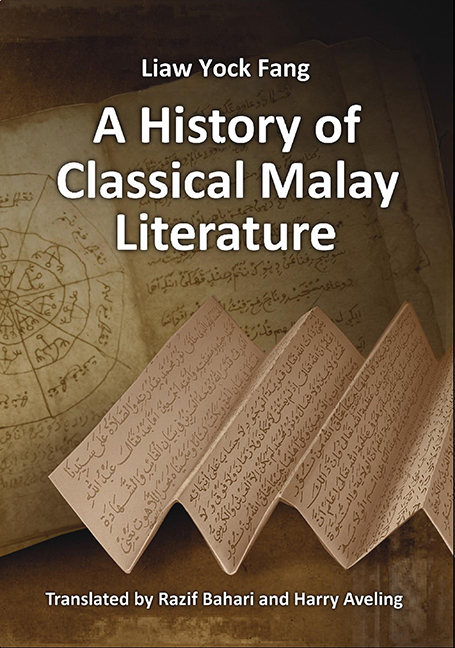Book contents
- Frontmatter
- Contents
- Preface
- List of Abbreviations
- Chapter I Folk Literature
- Chapter II The Indian Epics and The Wayang in Malay Literature
- Chapter III Javanese Panji Stories
- Chapter IV Literature Belonging to the Period of Transition from Hinduism to Islam
- Chapter V Literature of the Islamic Age
- Chapter VI Framed Narratives
- Chapter VII The Literature of Islamic Theology
- Chapter VIII Historical Literature
- Chapter IX Classical Malay Law Codes
- Chapter X Poetic Forms (Pantun and Syair)
- Bibliography
- Index
- Biographical Details
Chapter X - Poetic Forms (Pantun and Syair)
Published online by Cambridge University Press: 21 October 2015
- Frontmatter
- Contents
- Preface
- List of Abbreviations
- Chapter I Folk Literature
- Chapter II The Indian Epics and The Wayang in Malay Literature
- Chapter III Javanese Panji Stories
- Chapter IV Literature Belonging to the Period of Transition from Hinduism to Islam
- Chapter V Literature of the Islamic Age
- Chapter VI Framed Narratives
- Chapter VII The Literature of Islamic Theology
- Chapter VIII Historical Literature
- Chapter IX Classical Malay Law Codes
- Chapter X Poetic Forms (Pantun and Syair)
- Bibliography
- Index
- Biographical Details
Summary
Pantun
The pantun was originally a form of folk verse that was meant to be sung. Pantun are still meant to be sung. In his Account of a Voyage to Kelantan (Pelayaran ke Kelantan) Abdullah Munsyi noted various ways in which a pantun might be sung, including Lagu Dua, Lagu Ketara, Ketapang, Dendang Sayang, and so on. The pantun form first appears in Malay literature in the Sejarah Melayu and in some other chronicles from that time. It also occurs within the long narrative syair such as the Syair Ken Tambuhan.
There are various opinions about the word “pantun” itself. Some believe that it is based on the high Javanese parik, which is similar to the Malay pari, a proverb (peribahasa). In this sense it is close to the Indian sense of the seloka, a two-line verse form. Dr. R. Brandstetter, a Swiss comparative linguist, has suggested that the word originates from tun, which is found in a number of Indonesian languages; for example, in Pampanga, tuntun means “well organized”; in Tagalog, tonton suggests a skilful arrangment; in Old Javanese, tuntun means “a thread”, atuntun means “well arranged”, and matuntun is “to lead”; in Batak Toba, the word “pantun” means “polite, worthy of respect” (Djajadiningrat, 1933/34). R. O. Winstedt supports this opinion, noting that in many Indonesian languages, words which suggest “something set out in rows” gradually gain the new meaning of “well arranged words”, in prose or in poetry (Winstedt, 1958: 158).
In Malay, the pantun is a quatrain, rhyming abab. In Sundanese, however, the pantun is a long narrative poem, recited with a musical accompaniment.
The pantun has been studied in considerable detail by many scholars. One of the points of discussion is whether there is any semantic connection between the first couplet and the second. Pijnappel, in a paper he read at the Sixth Orientalists’ Congress held at Leiden in1883, has argued that the two are always closely related (Pijnappel, 1883).
- Type
- Chapter
- Information
- A History of Classical Malay Literature , pp. 442 - 490Publisher: ISEAS–Yusof Ishak InstitutePrint publication year: 2013



